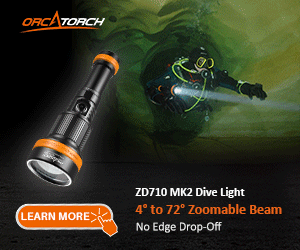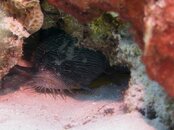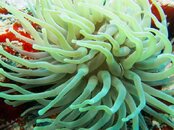Strobe placement is generally directly above, slightly behind the lense and tilted upwards to reduce backscatter- all to simulate natural sunlight. Starting out, I would only use this initial placement (as opposed to trying to get too adventurous with side lighting, inward lighting etc). Then figure out how much light you need for a pleasing exposure. Manually adjusting strobe strength is fairly easy as long as you have enough time underwater to set up the shot and then shoot a few different shots.I have my first dive trip with a uw camera coming up at the end of March. I'm shooting a G15 in a Nauticam housing with a single SS YS01 strobe.
With the YS 01, you need to be within 3' of the subject- preferably within 12''. Be selective with your shots and shoot only when the opportunity is there to isolate the subject and shooting from below when possible.
Edge's book has good advice regarding this as you will have seen.
RAW of course...
Personally I started in AV Mode as opposed to full manual. When I better understood the effects of the aperture, I went to full Manual for more creativity, but you can make very interesting pictures with AV alone.
Stay shallow. Depth makes it that much harder. If you have a like-minded buddy, try to stay above 2ata. Plenty of time and gas. This requires a lot of discipline but if your goal is to take 'quality' photos, then the shallows is the best place to do this when starting out. Perfect trim and horizontal hovering while waiting for fish to relax and turn to the camera is crucial- fish tails are boring.
A 'private' guide will always be better for photography than trying to follow a group. Don't forgo your duties as a buddy simply because you have a camera- but fully expect that your buddy will forgo theirs...
A 'chiller bag' from a supermarket keeps your housing from drying out after the dives until you can soak...

KISS. Start slowly, resist twiddling knobs and buttons. Close, then even closer. Shoot upwards.
Consider your approach and exit strategy when dealing with sensitive bottoms/reefs.






